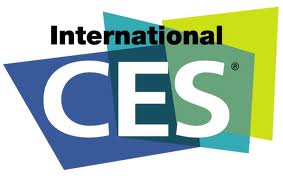The Consumer Electronics show is a trade show held every year in Las Vegas by
the Consumer Electronics Association. At its core its the place where many of the
top brands come to show their latest gizmos. They all try to one up the competition.
The show itself is closed to the general public, so only those in fields related to
consumer electronics typically attend. Still, the press is always there to show the latest
and greatest, so you won’t miss what’s going on even if you wanted.
I had the pleasure of going to CES as part of the industry while working at Texas Instruments. Although the media makes the event look like awe and wonder as new
products are announced, behind the scenes for those who are participating the days are long filled with trying to do as much business as possible. The top brands continually vie to take the top spot. This is a recipe for outrageous events. When I went in 2011, one of the hard drive manufacturers used a shotgun to fire at a hard drive. They also applied
high voltage, water and all kind of things to prove it was the toughest hard drive in the world. It looked impressive, but it was a a marketing gimmick none the less.
The high price tag for a hard drive capable of such things makes this product applicable to a very small market.
During my time at CES, demos had to be setup and demonstrated to customers. One of the things you quickly notice at CES is how challenging the environment is for anything wireless. To say that CES is one of the most extreme environments for wireless technologies is an understatement. Imagine thousands of people in the 3.2 million sq ft Las Vegas Convention Center that can host a maximum of about 200,000 people. The convention center has WiFi hotspots covering most of the floor. Add any WiFi and other wireless that exhibitors might show and you get massive congestion. I can’t tell you how difficult it was at times to get a connection between two devices, and get a certain throughput proving your device was better than the competition.
The pressure of showing technology (which tends to fail at the most inopportune moments) can cause many companies to overplay their hand. At CES 2012 Intel was caught showing a pre-rendered video to what was supposed to be a demonstration of DirectX on the Ivy Bridge CPU’s GPU. I won’t defend the practice of using videos, but the reality of the sheer number of variables going on and the desire to show the best makes this a very tempting solution. When your speaker is busy talking to a large audience, would he really remember to press this or that button at the exact time? Of course not. They have dozens of things going on. The pressure to do it right will cause errors, and the demo will suffer.
A video has a lot less variables, so less is likely to be wrong. In the case of Intel, the demo was apparently added late and might have been difficult to do live on such short notice. Good demos need to be extremely polished, and this is a significant time investment. No time when everyone at CES is trying to come out first out of the gate.
The key of getting demos right is first to plan. Understand your customers, your strengths and what you need to do to sell your product and differentiate yourself. You don’t always have to go far. Once you’re there, get there early, test, test and test in the actual location. Get everything running as soon as you can. You must have a few backups and plenty of any supplies your demos need. We typically prepared one demo with two backups just to make sure everything can run smoothly. We had batteries out the wazoo just to make sure we didn’t run out. You have to be ready to improvise and be flexible. Even if you came in early, another company using Wi-Fi, for example, might cause issues you didn’t have before.
That demo that looked cool back at the office suddenly doesn’t look as good on the floor. Worse yet, a competitor is showing something similar and you have to show something that will attract the crowds.
During my time at CES and having spoken to various companies I realized the main reason why 3000+ companies show up at one place and invest significant time and money to show their presence. For the business development and sales people, it’s actually a no brainer. With one trip, in one location you have thousands of potential customers. Quick meetings can be arranged to discuss business in short order. A customer might not even know you and suddenly realize your solutions are exactly what they need.
The demos are all ready to be shown to the customers and you can impress them all at once. Never underestimate how important this is. Many business opportunities fall through when they’re delayed. At an expo like CES there’s little excuse, and meeting people face to face is quite different from getting and e-mail from a stranger. In one day you may have meetings with 5 to 10 potential customers, and even if your success rate is low, the numbers are in your favor.
I don’t think there is another place you get see new technologies, products and applications that you didn’t imagine, done by companies you might not have known, as well as getting to see what your competitors are doing (albeit you should already know if you are in the business).
